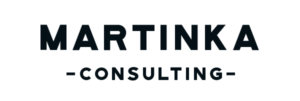A few months ago, the Wall Street Journal had an article on Boeing’s recent problems titled, “The Gang That Couldn’t Fly Straight. It covered how Boeing got so off track. I’m not qualified to analyze Boeing’s issues and the article made it seem they made some decisions based on numbers versus the planes or the people. It reminded me of when in “The Reckoning,” David Halberstam wrote about Lee Iacocca’s outrage because the financial people, who had such power at Ford, had “so little feel for cars.”
For many years there was an incredible demand of planes. Did Boeing lose their “feel for planes?” (and for people?). It was boom times for sure as it was for many other businesses. It caught up with Boeing and it’s catching up with other businesses. As I heard on a recent webinar, “Any company can do well in a boom.”
When things are easy there’s less attention paid to the details, especially the details about what a business buyer will want. Here are some examples of businesses I’ve seen in the last month or so.
- A proprietary product manufacturing company with an 82-year-old owner who is (still) the product designer, especially for the little tweaks each customer wants.
- A booming manufacturer with 90% of sales to one customer. The customer is no longer local and supposedly uses this firm because they can’t find a supplier near their current location. What happens when they do find a nearby supplier?
- A firm reduced to a skeleton staff due to COVID, their best month over the last three showed sales at about 30% of last year, and they want to sell for a large, guaranteed price.
- A very solid consumer business wanting to capitalize on a COVID spike in business, assuming (hoping) it’s a trend. Deeper analysis of sales shows it most likely is a spike.
Once again, it’s easy when things are booming. But business buyers want to know what happens when it’s not booming, when dependencies like the above owner and dominant customer manifest themselves, or what COVID and other risk factors do to the business.
And speaking of COVID and how it’s affecting buy-sell deals, here’s what my friend Gregory Kovsky with IBA wrote me, “…until a business shows three months in a row substantially similar to 2019 prior to believing it has returned to its prior strength and where historical valuation models are appropriate. Until that occurs, I believe some adjustment mechanism is warranted related to the ultimate value of a business in a transaction paid by the buyer to a seller.” For those of you not in the buy-sell industry, it means the buyer probably won’t guarantee the full price upfront, will pay a lower price, or a combination (or some other adjustment technique).
The value of a business is really what a buyer will pay for it. Too many risk factors and the price goes down. And the bottom line is, many of the risk factors present in small and mid-sized businesses can be mitigated over time. It takes awareness and effort. With COVID, we just don’t know.
“There seems to be some perverse human characteristic that likes to make easy things difficult.” Warren Buffett

